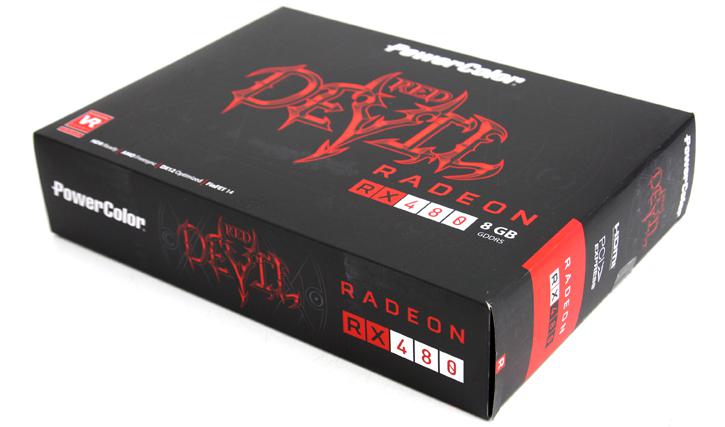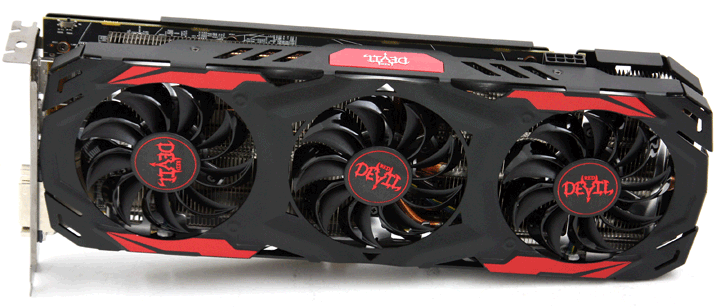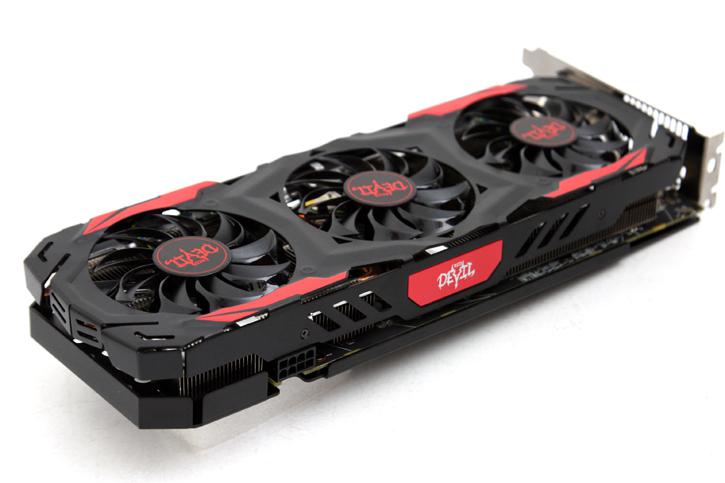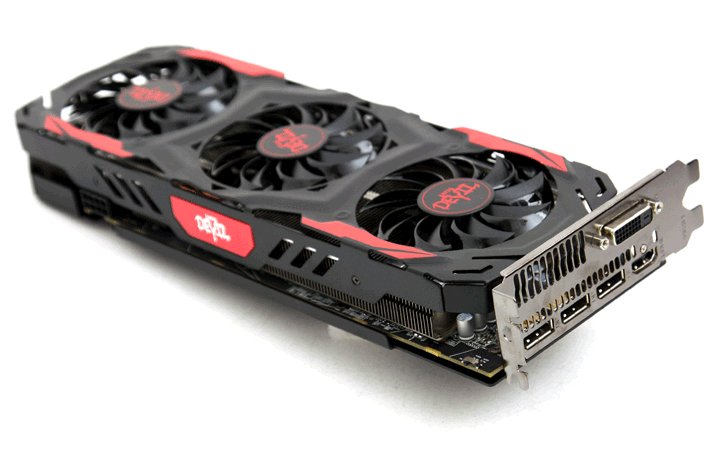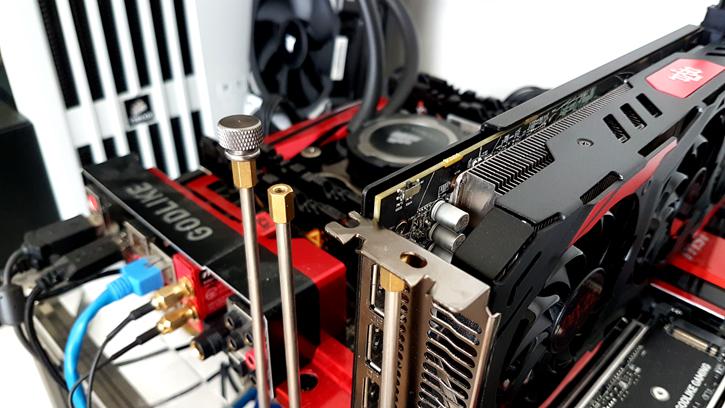Product Photos
Alright, so there she is; the PowerColor Radeon RX 480 Red Devil card we received is an 8GB version with a triple-fan heatpipe slash radiator design cooler. It has one PCIe PEG power connector (8-pin). The card has been designed to be a nice match for Full HD gaming, up-to 1080P and even 1440P.
These cards are positioned a great alternative for 1920x1080 and even 2560x1440 gaming as well. In our findings the card is faster compared to the competition's GeForce GTX 970, at 269 USD for the 8GB version that's not a bad position to be in. Obviously there's more to check out other than performance, we'll have a peek at PCB heat levels, GPU temperatures as well as noise levels.
The Radeon RX 480 is armed with 8 GB graphics memory which will be clocked at 8.0 Gbps / 256-bit to give you a little more leash with the higher resolutions and image quality settings. The reference clocked product will run with clock frequencies up-to 1267 MHz on its 2304 shader processors, this model is clocked at 1330 MHz (dynamic boost) in the fastest settings (which we test).
This Polaris 10 based product has been designed to be a match for the most popular Full HD and Wide Quad HD resolutions. Actually, it places a strong focus on 1440P gaming. As you can see, PowerColor includes one HDMI (2.0b), three DisplayPort 1.4 (HDR ready) connectors as well as a DVI connector (yay!). On the reference cards AMD unfortunately stripped away the DVI monitor connector which in the end I feel was an incredibly poor choice. Especially in this price range there are a lot of monitor owners with just a DVI connector.
A tad difficult to see, but if you look at the top left corner of the PCB you'll notice a micro-switch. Basically you get two BIOS modes, silent (with lower clocks and a TDP of a few watts lower) and the OC mode that runs 1330 MHz on the GPU boost. I can tell you already that the OC mode runs completely silent, hence there's no real point to actually run the silent BIOS mode whatsoever, think of it more in the lines of a fail-save BIOS I'd say. The card comes in retail with the OC bios switched as standard.
Alright, so there she is; the PowerColor Radeon RX 480 Red Devil card we received is an 8GB version with a triple-fan heatpipe slash radiator design cooler. It has one PCIe PEG power connector (8-pin). The card has been designed to be a nice match for Full HD gaming, up-to 1080P and even 1440P.
These cards are positioned a great alternative for 1920x1080 and even 2560x1440 gaming as well. In our findings the card is faster compared to the competition's GeForce GTX 970, at 269 USD for the 8GB version that's not a bad position to be in. Obviously there's more to check out other than performance, we'll have a peek at PCB heat levels, GPU temperatures as well as noise levels.
The Radeon RX 480 is armed with 8 GB graphics memory which will be clocked at 8.0 Gbps / 256-bit to give you a little more leash with the higher resolutions and image quality settings. The reference clocked product will run with clock frequencies up-to 1267 MHz on its 2304 shader processors, this model is clocked at 1330 MHz (dynamic boost) in the fastest settings (which we test).
This Polaris 10 based product has been designed to be a match for the most popular Full HD and Wide Quad HD resolutions. Actually, it places a strong focus on 1440P gaming. As you can see, PowerColor includes one HDMI (2.0b), three DisplayPort 1.4 (HDR ready) connectors as well as a DVI connector (yay!). On the reference cards AMD unfortunately stripped away the DVI monitor connector which in the end I feel was an incredibly poor choice. Especially in this price range there are a lot of monitor owners with just a DVI connector.
A tad difficult to see, but if you look at the top left corner of the PCB you'll notice a micro-switch. Basically you get two BIOS modes, silent (with lower clocks and a TDP of a few watts lower) and the OC mode that runs 1330 MHz on the GPU boost. I can tell you already that the OC mode runs completely silent, hence there's no real point to actually run the silent BIOS mode whatsoever, think of it more in the lines of a fail-save BIOS I'd say. The card comes in retail with the OC bios switched as standard.

